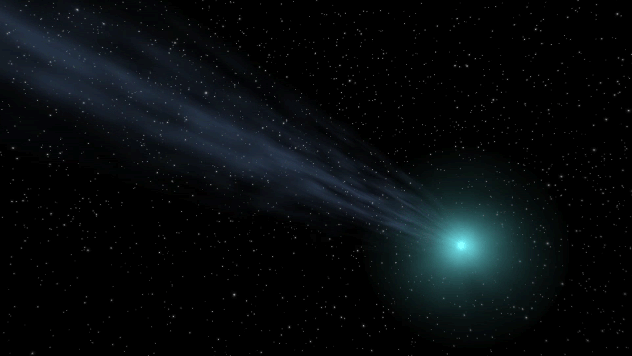
The wide variety of astronomy events this month will be great for people looking to spend some time outside under the night sky, including families with young children, as they will not require any special equipment apart from a blanket, warm clothes and a clear sky.
Here are the top three astronomy events to look for in April:
1. Super Pink Moon
When: April 7-8

The moon will be the main feature in the night sky during the first full week of April as it will be the biggest and brightest supermoon of 2020.
The supermoon will rise on the night of April 7, glowing all night long, and will be bright enough to cast shadows on the ground. Although it will appear slightly bigger and brighter than normal, the difference will be subtle and may be difficult for the average observer to notice.
April’s full moon is also known as the Pink Moon, but contrary to its name, the moon will not appear pink. Instead, it has been given this nickname due to the phlox, a perennial plant that blooms in April with pink flowers.

A view of the full pink moon, in Lakatamia, a suburb of capital Nicosia, Cyprus, Friday, April 19, 2019. (AP Photo/Petros Karadjias)
2. Lyrid meteor shower
When: April 21-22
April 22 is known around the world as Earth Day, and the global event will kick off with a light show from Mother Nature as the Lyrid meteor shower reaches its peak.
This is the first major meteor shower since January and will bring 15 to 20 shooting stars per hour on the night of April 21 into the early hours of April 22. This year will be a particularly good year for the “Earth Day meteor shower” as it occurs on a moonless night, meaning darker skies for onlookers.
CLICK HERE FOR THE FREE ACCUWEATHER APP
“These meteors are best seen from the Northern Hemisphere where the radiant is high in the sky at dawn,” the American Meteor Society explained on their website. “Activity from this shower can be seen from the Southern Hemisphere, but at a lower rate.”

Folks that miss the Lyrids will only have to wait about two weeks for the next chance to see a meteor shower, with the Eta Aquarids set to peak during the first full week of May.
3. Comet ATLAS
When: Late April
A newly discovered comet will soon make a splash in the night sky as it grows brighter throughout April, potentially becoming bright enough to see with the naked eye by the end of the month.
Comet ATLAS, also known as Comet C/2019 Y4, was discovered on Dec. 28, 2019, by astronomers using the Asteroid Terrestrial-Impact Last Alert System (ATLAS) in Hawaii. It is still too dim to see without a telescope, but it is expected to get much brighter in the coming weeks.

Animation of a comet. (NASA/JPL-Caltech)
“If predictions are correct, Comet ATLAS might reach a visual magnitude of +5 around May 1, 2020. That is theoretically bright enough to be seen with the eye, but the fuzziness of faint comets can make them harder to spot than comparably bright stars,” Earthsky explained on their website.
“To spot the comet, look in the northern sky. It is not far from the Big and Little Dippers,” AccuWeather Astronomy Blogger Dave Samuhel said.
Comet ATLAS is projected to make its closest approach to Earth on May 23, followed by its closest approach to the sun on May 31.
On March 19 at 11:50 p.m., winter transitioned to spring across the Northern Hemisphere during the earliest March equinox since 1896.
Hours later, just before sunrise, early risers were treated to a celestial alignment as the crescent moon fell in line with Jupiter, Mars, Saturn and Mercury in the morning sky.
Around the same time, a newly released photo revealed a stunning view of Jupiter like we’ve never seen it before. The image was captured by the Juno spacecraft which is orbiting the solar system’s largest planet.